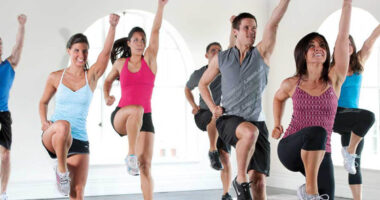
Yoga is an ancient practice that may have originated in India. It includes movement, meditation, and breathing techniques to promote mental and physical well-being.
There are many types of yoga and many disciplines within the practice.
This article explores the history, philosophy, health and wellness benefits and various branches of yoga.
What is Yoga?
Yoga is an ancient practice that involves physical poses, concentration and deep breathing.
A regular yoga practice can promote endurance, strength, relaxation, flexibility and fitness.
Yoga is now a popular form of exercise all over the world. According to a 2017 national survey, one in seven adults in the U.S. practiced yoga in the past 12 months.
History
The word “yoga” is first mentioned in the Rigveda, a collection of ancient texts. Yoga comes from the Sanskrit word “yuj” which means “union” or “joining”.
Yoga can be traced back to 5,000 years ago in northern India.
Indian monks spread their knowledge of yoga to the West in the late 1890s. By the 1970s, modern yoga teachings had become widely popular in Western countries.
Types of Yoga
Modern yoga focuses on exercise, strength, flexibility and breathing. It can help increase physical and mental well-being.
There are many styles of yoga. A person should choose a style based on their goals and fitness level.
Types and styles of yoga include:
Ashtanga Yoga
This type of yoga practice uses ancient yoga teachings. However, it became popular in the 1970s.
Ashtanga applies the same poses and sequences that quickly link each movement to the breath.
Bikram Yoga
People practice Bikram yoga, also known as hot yoga, in artificially heated rooms at a temperature of about 105oF and 40% humidity. It consists of 26 poses and a series of two breathing exercises.
Hatha Yoga
It is a general term for any type of yoga that teaches physical poses. Hatha classes usually serve as a gentle introduction to basic yoga poses.
Iyengar Yoga
This type of yoga practice focuses on finding the correct alignment in each pose with the help of a variety of props, such as blocks, blankets, straps, chairs and bolsters.
Kripalu Yoga
This type teaches practitioners to know, accept and learn from the body. A student of Kripalu Yoga learns to find his own level of practice by looking within.
Classes usually begin with breathing exercises and gentle stretches, followed by a series of individual poses and a final relaxation.
Kundalini Yoga
Kundalini yoga is a system of meditation aimed at releasing pent-up energy.
A Kundalini yoga class usually begins with a mantra and ends with a song. In between, it includes asanas, pranayama, and meditation aimed at producing a specific result.
Power Yoga
In the late 1980s, practitioners developed this active and athletic type of yoga based on the traditional Ashtanga system.
Sivananda
This system uses a five-point philosophy as its foundation.
This philosophy maintains that proper breathing, rest, diet, exercise, and positive thinking work together to create a healthy yogic lifestyle.
People who practice Sivananda use 12 basic asanas, which they perform before Sun Salutations and with Savasana.
Viniyoga
Vinioga focuses on form over function, breath and adaptation, repetition and holding, and the art and science of arrangement.
Yin Yoga
Yin yoga focuses on holding passive poses for long periods of time. This style of yoga targets the deep tissues, ligaments, joints, bones and fascia.
Prenatal yoga
Prenatal yoga uses poses that practitioners have designed with pregnant people in mind. This yoga style can help people get back in shape after giving birth and support health during pregnancy.
Restorative Yoga
It is a relaxing method of yoga. A person spends a restorative yoga class in four or five simple poses, using props such as blankets and bolsters to sink into deep relaxation without any effort while holding the poses.
Benefits of Yoga
According to a 2012 survey, 94 percent of adults who practice yoga do so for fitness reasons.
Yoga has many physical and mental benefits, including:
- Building muscle strength
- Increase flexibility
- Promote better breathing
- Support heart health
- Helping with addiction treatment
- Reducing stress, anxiety, depression and chronic pain
- Improving sleep
- Enhancing overall health and quality of life
Before starting a yoga practice, it is advisable to consult a medical professional, if possible.
Risks and Side Effects
Many types of yoga are relatively gentle and therefore safer for people when a trained instructor is leading the practice.
Serious injuries while doing yoga are rare. The most common injuries among people who practice yoga are sprains and strains.
However, people may want to consider a few risk factors before starting a yoga practice.
A person who is pregnant or has an ongoing medical condition, such as osteoporosis, glaucoma, or sciatica, should consult a health professional before practicing yoga, if possible.
Some people may need to modify or avoid certain yoga poses that may be dangerous given their particular condition.
Beginners should avoid advanced poses and difficult techniques, such as headstand, lotus pose, and vigorous breathing.
When managing a condition, people should not replace traditional medical care with yoga or postpone seeing a health care professional about pain or any other medical problem.










1 comment